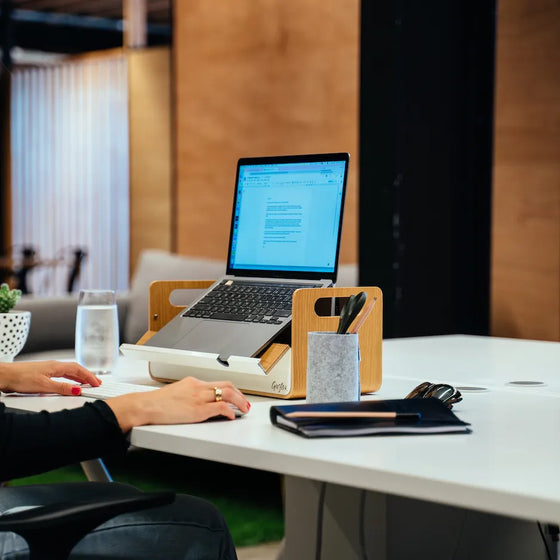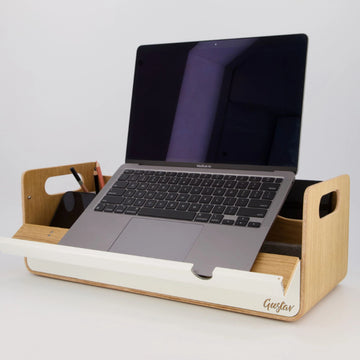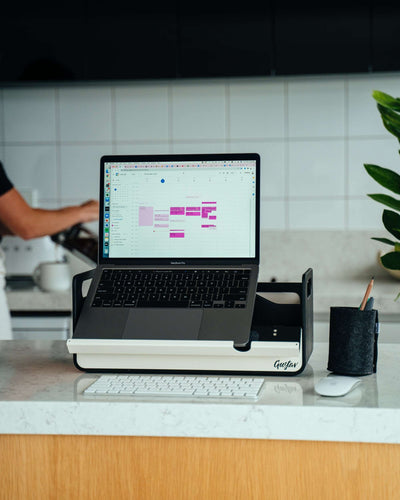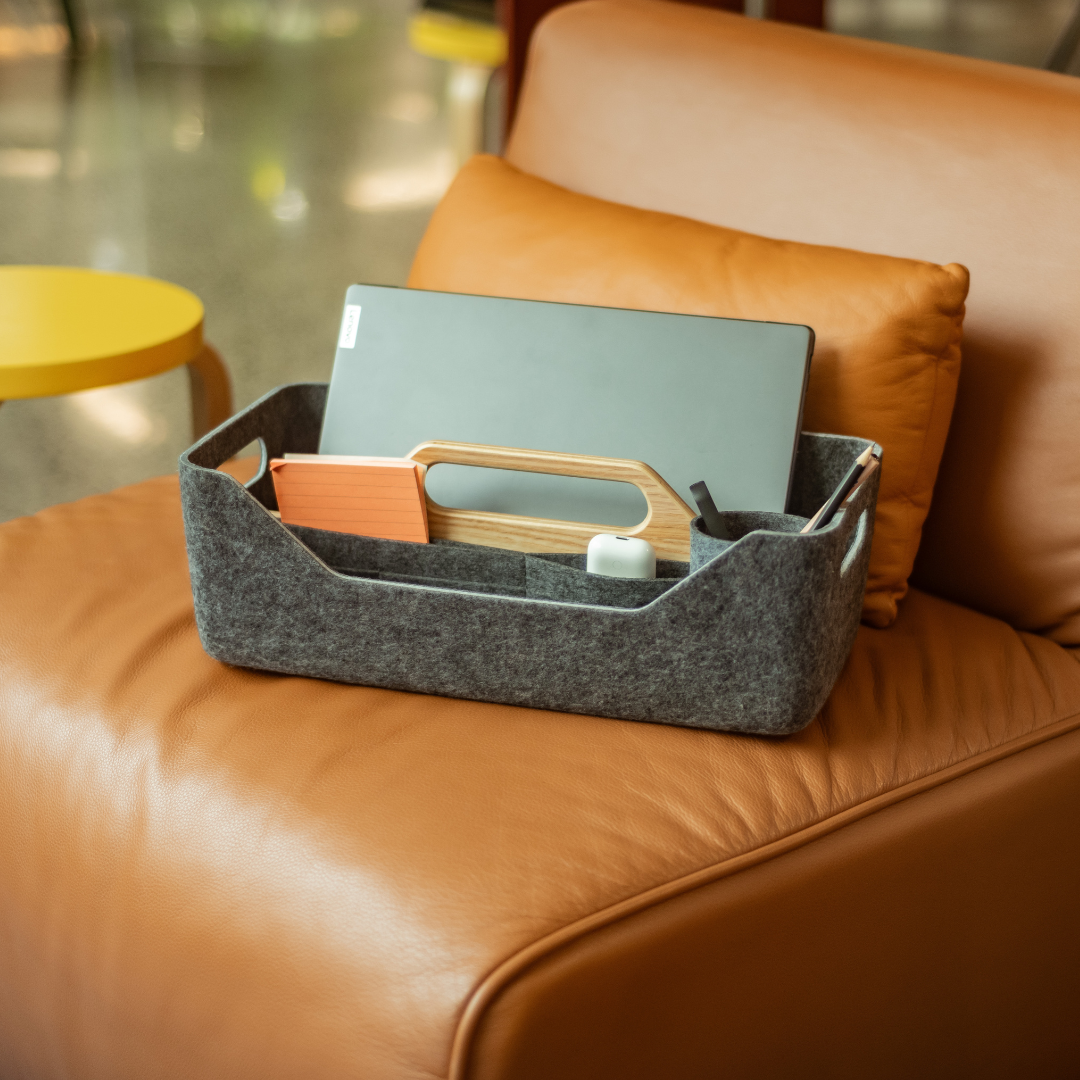Hybrid working after Corona

The new normal after Corona?
It has been about two years since the Corona pandemic broke into our lives and turned the work world upside down. We all want to finally return to some kind of - above all social - normality. But the crisis also brought positive change: mobile working and more flexible working conditions became the new standard, while at the same time, digitization in companies was pushed forward by leaps and bounds.
One thing is clear today, people do not want to return completely to pre-pandemic working conditions, nor do they want to work remotely and with social distance in the long run. The happy medium for the new way of working, according to Corona, is called: hybrid working.
Back to the future: hybrid working
Hybrid working combines the best of two worlds: Home office or mobile working and working in the office. Exactly how the concept is implemented is highly dependent on the company and management style and the industry. The 3+2 model is most common, with usually three days spent in the office and two at home. Before 2020, the concept was most common in tech companies and particularly innovative firms. Still, today, according to the study "The Future of Work. From remote to hybrid", the situation is already quite different: about 75 % of entrepreneurs want to enable hybrid forms of work in the future.
A clear framework is the basis for mobile working
Not all hybrid work is the same. For the concept to work successfully in the long term and become part of the corporate culture, clear regulations are needed with the employer and within departments or teams. Fundamental questions are, for example, whether mobile working is made possible for the entire workforce or only for individuals. Will this be determined by the managers or decided in a participatory manner in teams?
Transparent communication and equivalence
Time- and location-independent working dissolves formerly fixed boundaries. Checking in at the workplace in the morning or having a coffee chat with colleagues is no longer necessary; the lack of physical presence makes it more difficult to keep an overview and can trigger insecurities among stationary employees. In the long run, transparent communication between management and staff and within teams will be most in demand.
Another success factor for hybrid cooperation is the creation of similar framework conditions for stationary and mobile ways of working. It must also be clarified which activities are suitable for which scenarios.
New demands on the office
In recent years, our relationship to work and the demands on workplaces have changed radically. The office and its spatial design will have to adapt to the new needs of workers. Companies that have been making plans for remodelling or new construction for some time now have the opportunity for big changes.
New flexibility = new focus in the office
The physical office still remains an important factor for productivity and identification - but the focus must be set differently. Concepts such as activity-based working divide the office into different activity zones. The design focuses on the needs of the employees and can also be adapted at short notice.
The office as a place for collective exchange and creativity
There is a tendency for individual workplaces to be reduced and concentrated on tasks carried out in the home office. The office can consciously expand those neglected elements in mobile working: direct and spontaneous exchange, creativity and innovation, and joint activities that create togetherness.
Must-haves for hybrid working: Technical equipment and know-how
An optimal technical infrastructure is one of the most important prerequisites for mobile working and hybrid collaboration. Here, too, the framework conditions need to be clarified - is the equipment provided or financially supported? In addition to appropriate technical equipment, ergonomic furniture for the workplace and costs for internet, electricity, etc., must also be considered. Furthermore, the structure of collaborative work is evolving with new technologies.
Hybrid meetings are more than just video conferencing
To fully exploit the potential of hybrid meetings, they need to be conducted and prepared in a new way. Accurate minutes, a suitable seating arrangement and targeted moderation are just as important as the right collaboration and video software or qualitative technical equipment. Variable camera guidance or virtual reality scenarios go a few steps further into the future.
Technology and security
The issue of security plays an increasingly important role in the hybrid workplace. If sensitive data and documents are processed digitally, access regulations and encryption systems are needed, or secure storage for analogue documents. Companies and employees bear more responsibility but also enjoy more trust.
New skills for management and staff
What the hybrid manager 2.0 needs
Managers have it in their hands how the extent and process of mobile working are determined. The role model effect of managers should not be underestimated either - only if they actively exemplify the hybrid model and do without things like their own corner office can the corporate culture and working methods change permanently.
Leading at a distance requires new soft and hard skills, but the most important thing is transparency and trust on both sides. Work becomes more self-directed and results-oriented, and the classic employer and employee hierarchy dissolve in favour of participative forms. Personal exchange, flexibility, and the manager's humanity gain new space and importance in the hybrid.
Hybrid skills for employees
In hybrid work, staff are given more freedom, which on the other hand brings with it increased personal responsibility and self-organisation. The realistic assessment of one's abilities and needs is just as important as continuous coordination within the team. Mastering current technical tools and targeted communication will be core competencies.
Last but not least, mindfulness is a key factor - this means protecting oneself from temporal delimitation and digital stress and consciously cultivating relationships with colleagues.
Hybrid HR and Employee Experience
Human Resources is where all the threads of culture change come together - successful hybrid offices also require new strategies for HR development and a focus on the employee experience.
Hybrid onboarding
In recruiting, hybrid methods have already worked well during the pandemic and boosted the international candidate market - with virtual onboarding, it becomes more difficult. Personal contact is still particularly important for integration into the team and familiarisation; digital tools such as onboarding apps can provide additional support.
Hybrid working is becoming an important part of the employer brand
In times of skills shortages and waves of layoffs, applicants have more power than ever. Recent surveys want more flexible working models and balanced corporate culture. Hybrid work is becoming a decisive factor in the competition for the best workers. However, to retain employees, it must be more than just a figurehead and must be implemented carefully.









